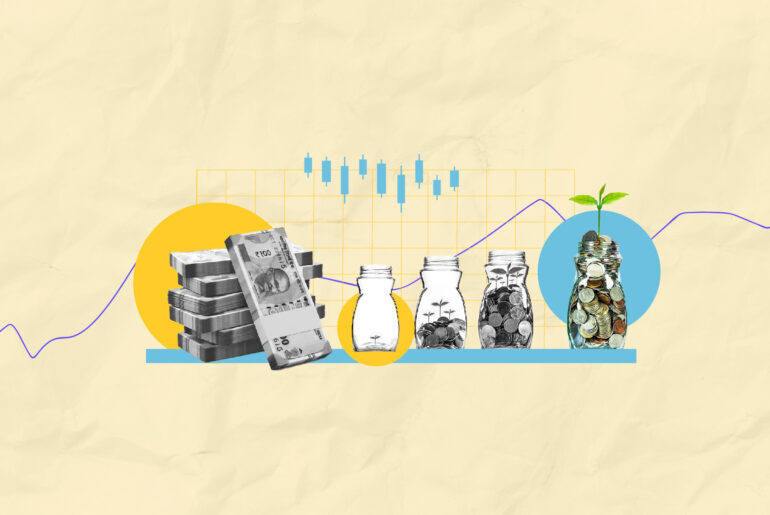Last Updated on Apr 6, 2021 by Manonmayi
Being the world’s swing producer of oil, Aramco and its health are paramount to its many stakeholders. Until late 2019, the entity was a giant state-owned oil company but in November, it created quite some buzz after the Saudi Aramco IPO announcement. Today, the Saudi Aramco IPO is the biggest of all in 2019 in world history.
Before getting into the details, here’s a sneak peek into the Saudi Aramco IPO history and the events that made the oil-giant made what it is now.
What makes Saudi Aramco as it is now?
Aramco was started in 1933, when the government of Saudi allowed Standard Oil of California to explore oil in the kingdom. This concession later attracted several investments and partnerships from today’s well-known companies such as Mobil, Exxon, and Chevron.
Yom Kippur and the oil weapon
For decades, Aramco was owned and operated by foreign entities. But, the Yom Kippur war that happened in 1973 changed the scenes for Aramco (for good). But this is not the only event to be applauded, ‘oil weapon’ equally contributed to liberating Aramco from foreign hands. Amid the war, the oil-producing countries cut production of oil. Further, in early October that year, Libya followed by Saudi Arabia and other oil-producing states declared an embargo on oil exports to the US. This spiked the demand for oil, when, in reality, the supply was short.
Saudi Aramco in the hands of the home government
In the end, oil-producing countries got more control of foreign-owned oil companies that operated in their borders. Saudi Arabia came to own 25% stake in Aramco in 1973 and 60% in 1974. By 1981, Saudi Arabia had finally owned Aramco. That’s how Aramco became a Saudi-government entity. It has a board and executive management, but Mohammed Bin Salman, the Crown Prince of Saudi is the effective CEO. That is why, after years of protecting Aramco from modern concerns, the Crown Prince pushed for Aramco to be valued a whopping $2 lakh crores.
Saudi Aramco IPO history
Moving from a corporate monarchy to the global business community wasn’t an easy road. But here’s how they did it.
Crown Prince’s dream of getting Aramco a valuation of $2 lakh crores
Many international banks were happy to market Saudi Aramco’s business. However, bad news struck and poured water over the Crown’s Prince’s extravagant dream of getting a spectacular valuation and the efforts of international banks in attracting foreign investments.
The news that took away the dream
The Crown Prince was alleged to be the person who ordered Jamal Khashoggi’s murder. This put the idea of issuing Aramco’s share out in public in danger. Because, launching the Saudi Aramco IPO looked as if the government didn’t care about the murder and other human rights violations. And so the Crown Prince’s dream of claiming Aramco’s valuation to be $2 lakh crores faded away.
Challenges to Saudi Aramco IPO
Though the international banks marketed the Saudi Aramco IPO to investors outside Saudi and investors agreed to go ahead given attractive huge profits, the journey wasn’t easy this time around too.
The 17th August’s attack at Aramco’s Shaybah NGL facility stopped the IPO for ~2 weeks. This attack, followed by 2 more on 14th September: Abqaiq and Khurais facilities, hampered crude oil production, which decreased by 54%. Though the facilities had resumed normal operations by September 25th, investors’ confidence was fairly damaged.
To trust the Saudi government (or not)
The attacks were not the only concern that investors had. A lack of transparency in Saudi Aramco’s relationship with the government was another one. You see, Aramco’s land and oil reserves are owned by Saudi Arabia and for investors to invest in a government-controlled company, trust is paramount. So, did the foreign investors not trust the government of Saudi? No, that’s not it.
The epic failure of international banks
Foreign investors’ demand for the Saudi Aramco IPO didn’t meet the Crown Prince’s expectation of a $2 lakh crores-valuation. When the international banks put this news across the company’s chairman, Saudi Aramco diluted their involvement. Now, just 3 banks (including 2 local banks) were left with overseeing the Saudi Aramco IPO. Since international investors stepped away, the only investors available for the oil-giant were the locals and from the gulf region.
The Saudi Aramco IPO listed finally!
When the idea of going public was first perceived in 2018, the Saudi government had planned to float 5% of Aramco’s stake in a deal that would yield $100bn. It was looking at international markets such as New York or London, as well as Riyadh. However, the idea didn’t see light until late in 2019.
First, it could cause legal complications in America. Second, the Crown Prince expected Saudi Aramco’s valuation to be a whopping $2 lakh crore. Last, journalist Jamal Khashoggi’s murder in a Saudi consulate in Turkey had caused global fury. These events resulted in the Saudi Aramco IPO delay.
Fortunately, the status of Saudi Aramco IPO revived early in 2019 after the company successfully issued international bonds. However, as stated before, international investors were not as zealous about the Aramco stock as they were about the bond, given geopolitical risks, low oil prices, and climate crisis. Nevertheless, Saudi Aramco sold a mere 1.5% stake and raised about $25 billion as against its valuation of $1.7 lakh crores. What’s noteworthy is that the IPO is heavily subscribed by rich Saudis, sovereign wealth funds, and major Chinese customers.
Saudi Aramco IPO details
Despite facing many hurdles, the Saudi Aramco IPO performed well and was oversubscribed thrice. While 1% of the stake was open for institutional investors, 0.5% was for subscription to retail investors.
The Saudi Aramco IPO listing was done on Tadawul, the only securities exchange in Arabia, where each share of the IPO was priced at 32 riyals ($8.53). The IPO raised $25.6bn by selling 3 billion shares and Aramco was valued at ~$1.7 lakh crore, which made it the world’s most valuable publicly traded company topping Apple (AAPL) at ~$1.15 lakh crore.
Purpose of Saudi Aramco IPO
While funding the Vision 2030 plan is the most popular purpose of issuing public that has garnered attention, Aramco also has other plans in place. Vision 2030 is the Crown Prince Mohammed Bin Salman’s dream of overhauling and modernizing Saudi Arabia’s economy. But for this to happen, Saudi needs to move from an oil-reliant economy to a more diversified one, which is what he is looking to do. He wants to diversify the revenue-generating sectors of the economy and concentrate on private/public healthcare. Besides, the Saudi Aramco IPO is also expected to strengthen the Public Investment Fund, Saudi’s sovereign wealth fund.
The Saudi Aramco IPO facts
- Saudi Aramco has promised its investors an annual dividend of $75 billion through 2024. A lower risk and guaranteed payouts, which are the features of a bond, may have enticed most investors to go ahead and subscribe to the IPO.
- The Saudi government oil-giant has promised one bonus share for every ten bought and held for 6 months by Saudi investors. On the flip side, if the oil price plunges, the government gets more royalties. Riding on this, Bernstein Research reveals that Aramco’s profits will increase by $1.5 billion each time oil prices rise by $1
Other interesting facts about Saudi Aramco
- In 2018, Aramco reported revenue of $111 billion, almost double of what Apple made
- Aramco’s reserves were 5 times larger than that of its rivals: ExxonMobil, Chevron, Shell, Total, and BP put together
- Aramco’s bottom line shoots up by 1 billion every 1% rise in production




